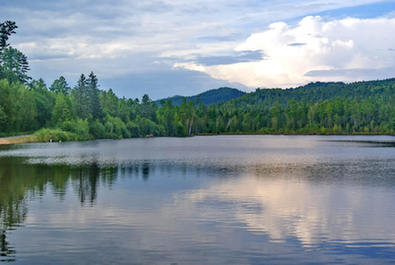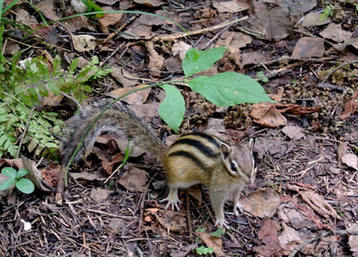Korean Pine Profuse Yichun
|
 |
|
As much as 99.8 percent of the Tangwang River Park is covered in green. |
Rocks and Trees
The formation over aeons of the Lesser Hinggan ranges has created geological wonders. The granite phalanx at the center of the Tangwang River National Park, for example, is a typical landform of the Indo-China movement period.
Expecting barren scenery dotted with clusters of grotesque-shaped boulders, I was surprised to find that the park, located at the head of the Tangwang River, is covered in dense foliage that includes 110 or more valuable tree species. Among them, the Korean Pine is predominant.
Yichun is site of Asia’s largest primitive forest whose Korean Pines are indigenous to the Lesser Hinggan ranges. Eighty percent of the 60 percent of the world’s Korean Pines that grow in China are in Yichun.
Most of the grotesquely shaped boulders are scattered throughout the park’s southern and middle section. On entering the southern zone, the so-called Slit of Sky – two rocks side-by-side with space in-between wide enough only for slim-built trekkers to sidle through – greeted my eyes. Many visitors were waiting to edge through this “passage,” beneath which only a sliver of blue sky is visible. Other rocks along the road include one that bears a strong likeness to Buddha and others that resemble certain animals.
Our tour guide told us that, billions of years ago, Yichun lay under the ocean. Movements of the earth’s crust gradually exposed sections of the seabed which rose to become monoliths. Throughout this long process, vegetation grew and proliferated around them, eventually becoming the forests of today. These granite colossi have stood guard for millennia on this secluded backland, withstanding the bitter cold gales and blizzards of its long winters.
 |
|
Squirrels occasionally scamper down Korean Pine trees and past visitors, scavenging for dropped sunflower seeds and fruit windfalls. |
Korean Pine Preserve
After lunch we drove to China’s largest Korean Pine preserve, the 141-square-kilometer Wuying National Forest Park. Trees here are a mixture of needle- and broad-leaf species, among which the Korean Pines have grown here for thousands of years. The oldest is 500 years old.
Visitors can stroll around the park on foot or take electric shuttle buses. A 17-kilometer-long figure of 8-shaped road strings together the park’s main attractions. They include the 600-square-kilometer fauna and flora specimen house, a 47-meter-tall wildfire watchtower, an oxygen “bath” area, and Tianci (Heaven-sent) Lake.
